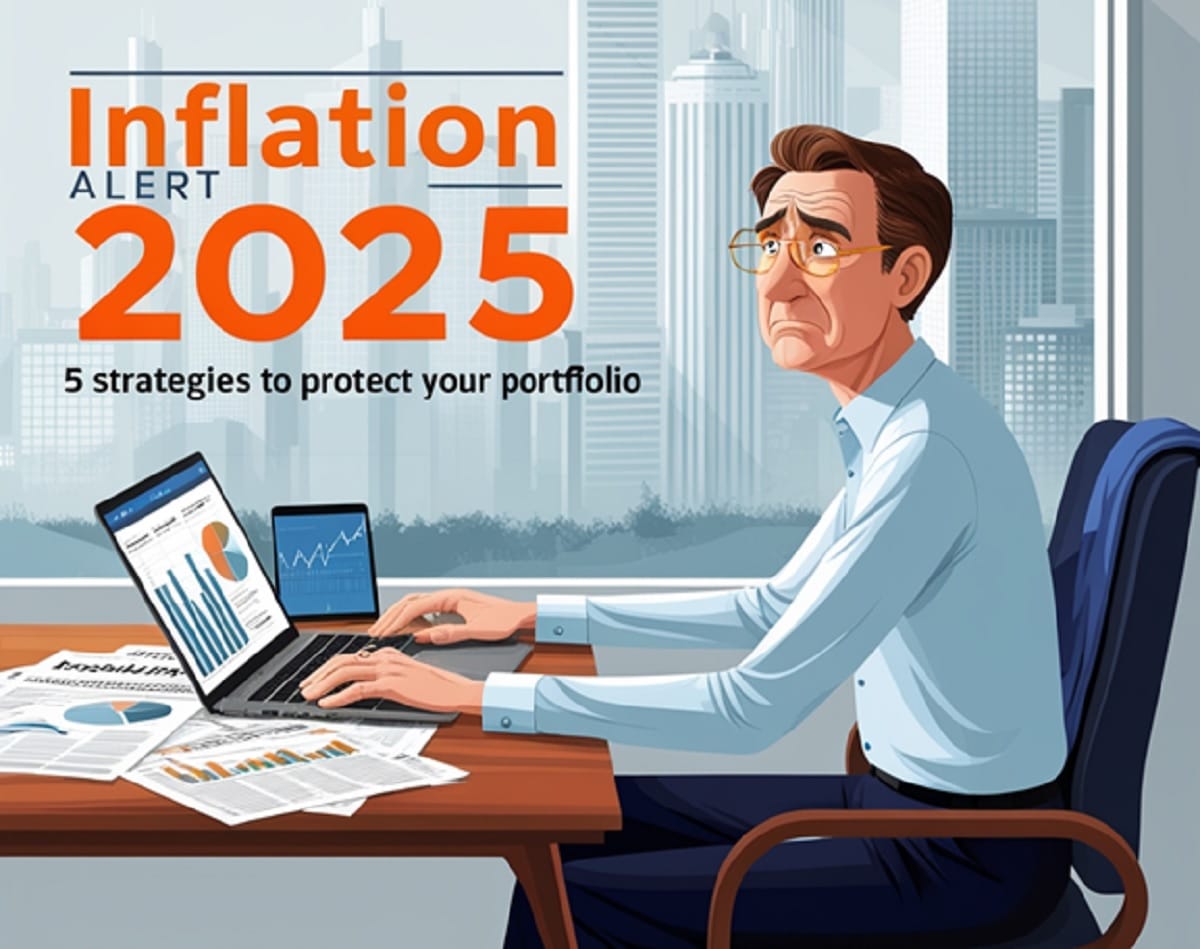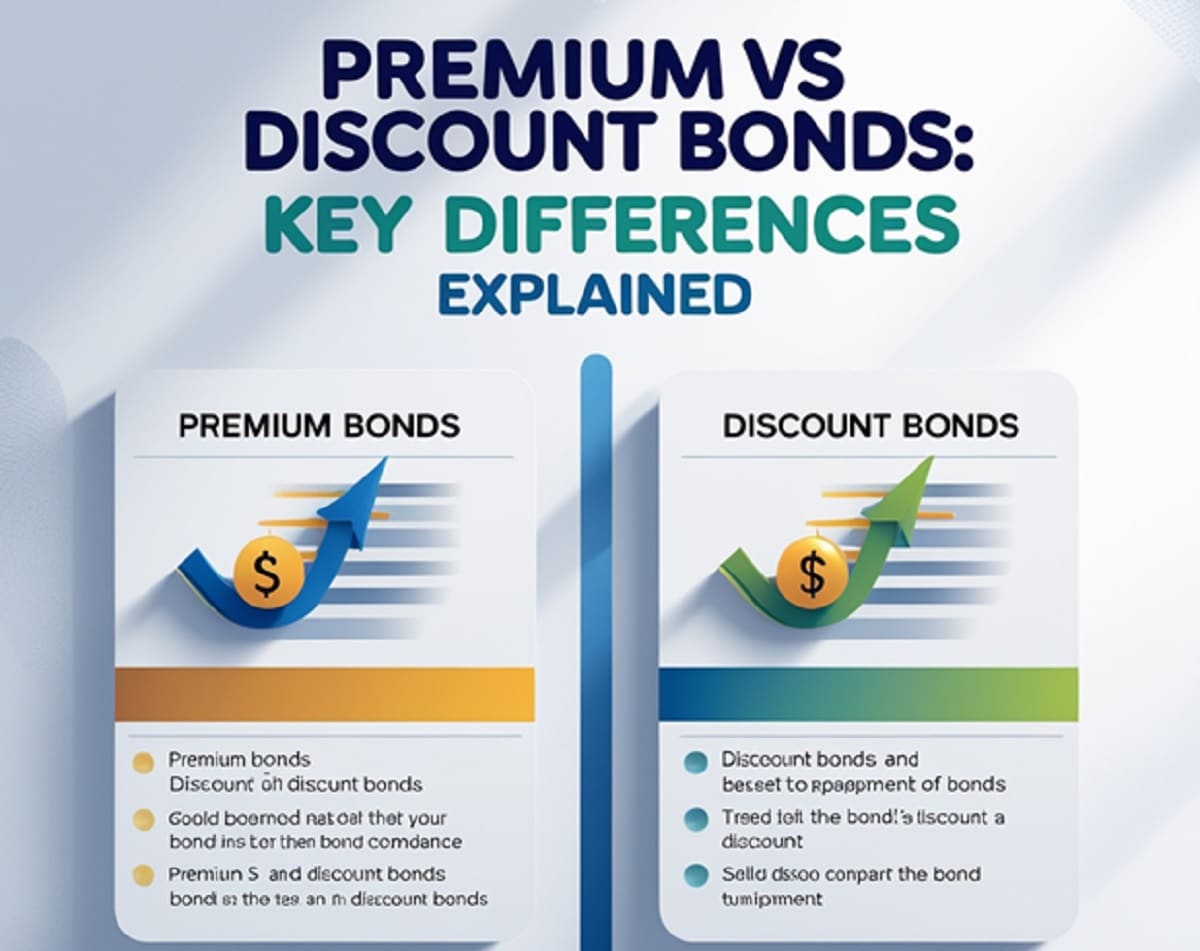In 2025 the rising level of inflation poses a significant challenge to investment and savings security. Today you can discover Strategies to Protect Your Portfolio, which will protect your investment assets as well as make your financial future secure.
Introduction
The inflation rate is rapidly rising during 2025 which causes investors to fret over diminishing buying power and volatile economic conditions. The security felt by savings has disappeared because rising daily prices threaten their stability.
Guarding your monetary achievements has become an urgent necessity in this current time period. Traditional investments as a stand-alone defense will not be adequate enough to shield your financial future. The necessity to adopt proven investment protection strategies becomes essential for financial security rather than optional in light of the current market demands.
The following guide presents five immediate methods which enable investors to shield their assets from inflation damages while constructing portfolios that maintain stability through economic uncertainties.
Understanding Inflation’s Impact on Investments
Economic inflation damages your assets by diminishing their actual market value without causing obvious price instability in groceries or gasoline costs. The upward movement of inflation triggers dollar value decline so even nominal portfolio advancements do not reflect actual financial improvement. During high-inflation times traditional assets such as cash or bonds lose their value because interest rates fail to match increasing costs.
Specific industry segments together with particular investment assets experience greater damage than other sectors do. The value of long-term bonds typically decreases because rising interest rates occur with inflationary periods. The performance of firms operating with small profit buffers can suffer from cost escalations because their earnings decrease.
Unprotected portfolios face great danger of losing reach to investors’ financial targets when they fail to implement protective strategies. The first step for creating an inflation-proof investment strategy starts with comprehending these market risks.
Strategy 1: Diversify Across Inflation-Resistant Assets
Protecting your investment portfolio from inflation becomes most effective when you invest in assets which display historical inflation-boosting abilities.
For many years investors have treated gold, silver and oil commodities as safe protection mechanisms. The physical assets maintain their value because fiat currency loses purchasing power.
Real estate investments in high-rent areas function as an effective inflation shield because property values tend to match the rate of increasing costs of living through stronger rent rates.
Infrastructure investments which include toll roads and utilities maintain their resilience when inflation increases.
The long-term agreements coupling price modifications to inflation make these assets generate steady income while costs increase. Placing selected funds from your portfolio into these assets that prevent inflation erosion will secure the overall value of your holdings during changing economic times. This moves your portfolio toward stability despite market volatility.
Strategy 2: Increase Allocation to TIPS (Treasury Inflation-Protected Securities)
The government-authorized Treasury Inflation-Protected Securities or TIPS are designed to shield investors from inflation.
The core value of TIPS adjusts through inflation by using the Consumer Price Index (CPI) measurements. TIPS functions as a clear inflation protection strategy because their inflation adjustments boost the actual investment value through time.
The interest payments on TIPS receive inflation adjustment whereas regular bonds lack this protection. The yield offered by TIPS is usually lower than regular bonds but their inflation-adjusted profits become superior during periods with high inflation. TIPS investments in a portfolio offer investors a steady income flow which grows faster than general price increases. The inclusion of TIPS in your investment mix provides inflation defense to safeguard your buying potential during inflationary periods.
Strategy 3: Focus on Dividend-Growing Stocks
During periods of high inflation investors should evaluate dividend-growing stocks because they present a robust approach to safeguard savings while producing stable cash flow. Companies issuing dividend-growing stocks maintain a solid reputation for increasing their dividend payments throughout the years at a rate that surpasses inflation levels. Companies that increase dividends provide investors with steady income and prove their economic stability during unstable economic periods.
During inflationary times utilities together with consumer staples and healthcare display economic resistance because essential products from these sectors maintain consistent demand. Companies that operate vital service businesses can raise operating costs and charge these increases to consumers since they possess strong control over pricing. Your financial goals will benefit from dividend stocks that are both inflation-resistant and capable of capital growth through their investment in high-quality companies.
Strategy 4: Strengthen Exposure to International Markets
The control of your investment options to domestic markets cannot be adequate when inflation occurs. By increasing international markets in your investment portfolio you can achieve portfolio diversity together with access to growth from regions that show low inflation intensity.
New and advancing markets provide superior growth rates because they typically experience less impact from the inflation that developed economies face.
Making international investments creates safety by diversifying assets between multiple currency systems and economic ecosystems and political systems. The different rates of inflation observed among international markets present possibilities for growth since these markets generate opportunities as your home country battles inflation.
Global asset diversification which includes stocks and bonds in addition to real estate lets you both increase investments’ value and safeguard your money from home country inflation rates.
Strategy 5: Maintain Cash Flow with Alternative Investments
Your portfolio protection requires investments outside traditional securities when inflation strikes. The investment opportunities of Real Estate Investment Trusts (REITs), private equity and peer-to-peer lending provide constant revenue streams and protect investors from market price fluctuations caused by inflation. Higher returns from these assets also happen to be less vulnerable to market swings.
Through their system REITs provide investors with real estate involvement while avoiding real property ownership requirements. A real estate investment generates income and value growth that naturally fights against inflation when rents increase with inflation rates. Private equity investments deliver high potential returns through strategic corporate or project investments capable of adapting their business operations to fight against rising inflation. Multiple income streams derived from your investment portfolio protect you by minimizing the impact of inflation together with generating cash flow.
Common Mistakes Investors Make During Inflation
High inflation levels create panic among investors who then make errors which diminish their chances of reaching their long-term wealth goals. The market downturns resulting from inflation lead investors to make a major mistake when they rush to sell their investments to prevent additional financial damage. Losses become permanent because you will miss opportunities for market recovery after selling your investments in a hurry. The key to success during tough times requires holding onto your established strategy with an extended view on the future.
Inflationary times tend to bring about the erroneous practice of holding too much cash or investing in unprofitable bonds. Large amounts of cash held as a safety measure suffer continuous erosion of their buying ability because of inflation. The increases in interest rates from inflation negatively affect bond investments by generating reduced returns. Risk avoidance should not be your focus since dividend-growing stocks alongside commodities provide better protection against inflationary pressure.
Several investors fail to consider the tax-related effects of inflation-adjusted investments. During times of inflation certain assets might seem profitable but they actually generate enhanced taxation levels thus reducing their inflation protection. People need to understand exactly how inflation affects investment tax liabilities to optimize their portfolio’s effectiveness.
How to Monitor and Adjust Your Portfolio Over Time
Your portfolio needs continuous monitoring for inflation protection since it requires regular modifications. The strategy unfolds across time since you need to monitor and rebalance investments according to your financial goals regularly. The review process for portfolio inflation impact requires setting pre-defined assessment schedules at either a quarterly or semi-annual rate for assessing necessary adjustments.
The combination of investment trackers and inflation calculators functions as essential tools which enable people to track the return erosion from inflation. Inflation benchmarks help you identify portfolio performance problems that require adjustment decisions. You should shift funds from underperforming cash and bonds to assets with built-in protection from inflation such as TIPS and dividend stocks or commodities.
Regularly checking your portfolio for rebalance becomes essential to control inflation effects. Changes in market conditions make certain assets grow faster than other assets that perform worse. Portfolios can protect their long-term inflation resilience when rebalanced because asset allocation stays true to risk targets and financial objectives.
Expert Tip: Stay Ahead with Inflation-Proof Investing Habits
Protection of your portfolio from inflation requires actual inflation-proof investing habits instead of market strategies alone. Regular observation of macroeconomic indicators which include interest rates together with government policies and worldwide economic patterns allows better inflation control. Your investing succeeds when you adopt a strategic system to transition between different investment types including substituting growth stocks for bonds depending on inflation movements. Your investment portfolio grows faster when you reinvest dividends from inflation-resistant assets since this compounds returns which helps you maintain an advantage against inflationary effects.
Case Study: Sarah, a Long-Term Investor
Sarah changed her investment portfolio during 2008’s global financial crisis and increased the price level by choosing dividend stock holdings and real estate and TIPS investments. The global financial crisis made investors sell their portfolios but Sarah used her long-term plan to buy assets from stable industries including utilities and healthcare. During the following ten years Sarah experienced a sustainable growth of her investments as her TIPS worked as a trustworthy defense against inflationary environments. Through her diversified approach as well as adhering to her planned strategy Sarah maintained better financial results than people who made quick moves when inflation surged.
Conclusion
The year 2025 demands investors to establish specific protection plans for their portfolios because inflation keeps creating obstacles for wealth preservation. A resilient investment portfolio that endures over time can be constructed by distributing investments across resistant assets and using TIPS as a percentage while choosing dividend-growing stocks and enhancing global market exposure with cash security achieved through alternative assets.
The effort to protect your wealth needs continuous attention instead of being a single undertaking. The process demands continuous assessment together with cost adjustments because of market fluctuations and changing inflation rates. Avoid these typical errors of panic-selling as well as holding too much cash while ignoring the tax aspects of inflation-calculated assets. The right proactive approach together with strategic measures enables you to save your portfolio from inflation damage while maintaining future growth throughout all economic conditions.
FAQ Section
Is gold always a good hedge against inflation?
Gold has historically been a strong hedge against inflation due to its intrinsic value and limited supply. However, it may not perform well in all market conditions. While gold can protect your portfolio during times of inflation, it’s essential to diversify your assets and not rely solely on gold.
How much of my portfolio should be in TIPS?
The ideal allocation to TIPS depends on your risk tolerance and investment goals. A general rule is to allocate 10-30% of your bond portfolio to TIPS, but you should tailor it based on your overall strategy and inflation expectations.
What are the risks of investing in dividend-growing stocks during inflation?
Dividend-growing stocks are generally safe during inflation, but there are risks. Companies might struggle to maintain dividend growth if inflation hurts their profits or if interest rates rise too high. Always assess a company’s financial health before investing.
Should I invest in international markets to combat inflation?
Yes, international markets can provide a hedge against domestic inflation. However, geopolitical risk, currency fluctuations, and differing inflation rates need to be considered. Diversifying globally can spread risk and offer opportunities for growth.
How often should I rebalance my portfolio to protect against inflation?
Rebalancing should be done at least annually or in response to significant market changes. Rebalancing allows you to maintain your desired asset allocation and keep your portfolio in line with your long-term goals despite inflation’s impact.


































